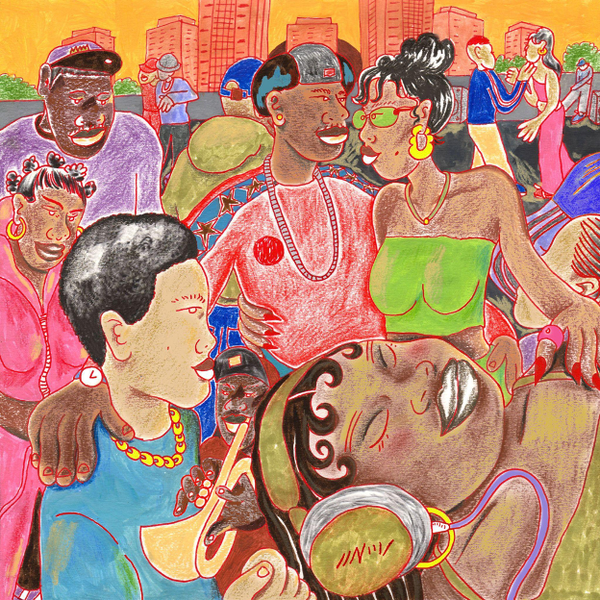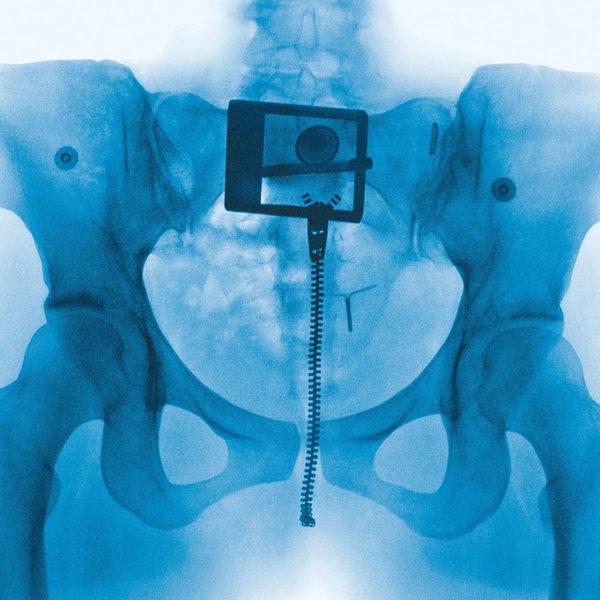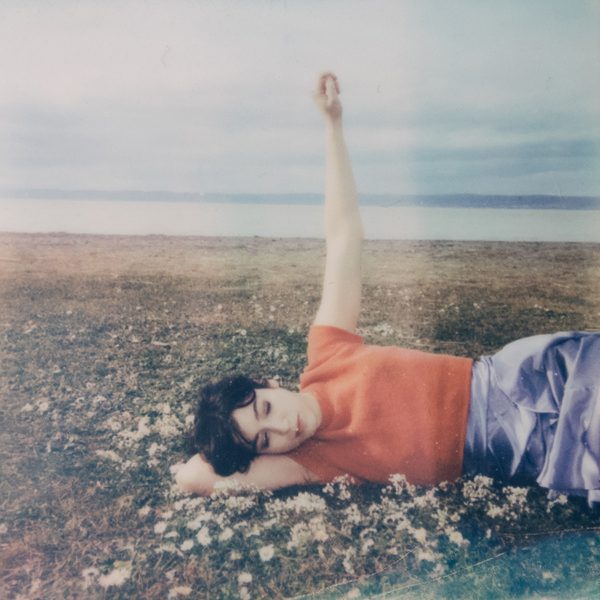
Happiness is Trondheim Calling
Lead photo of Drea by Edvard Rokkan
Europe’s friendliest showcase festival, Trondheim Calling, offers such a fjord-load of incredible music that it’ll knock you on your back – if the ice doesn’t get ya first. Hayden Merrick reports from Norway.
Trondheimers keep their Christmas decorations up way beyond the twelfth night.
There aren’t wacky waving inflatable Santas or any of the miscellaneous tacky plastic we festoon our homes with in the UK. Instead, there is the tall, stoic family of reindeer made out of amber lights that keep watch over Stiftsgårdsparken – a city park you pass as you slalom between Trondheim Calling’s nine venues. There are green wreaths hung symmetrically on the white-wood houses along Nedre Baklandet, a cobbled street whose twee establishments serve reindeer stew (finnbiff) and brown cheese (brunost) and £12 pints (uh oh), and which leads to the iconic red Old Town Bridge and its ‘Gate of happiness’ – where it’s nice to see locals having a think against the backdrop of colourful storehouses rather than flocks of content-hungry ‘fluencers.
For Norwegians – particularly the indigenous Sámi peoples – reindeer are for life, not just for Christmas, and it’s the same with the lights, which have become untethered from their seasonal associations and instead help to ease the slog of belated sunrises and early sunsets. Trondheim in late January/early February can be a frigid place if you’re not used to the climes. Walking the streets in doc martens is like walking on an ice rink in doc martens. You can spot non-locals because they regularly do that cartoonish dance where you lose control of your legs, your arms flail, and you narrowly avoid butt-planting on the ice. Or maybe you don’t avoid it but at least no one yells “wheyyyyy!”
As one braves the four-below weather, skidding from venue to venue, they might have to play chicken with a Zamboni or blow their nose every 30 seconds. But if they’re a sucker for snow, like this writer is, then it’s the most magical place on earth – a place where you can swim in the teeth-chattering fjord and then sputter and swear your way back into the enveloping cocoon of the sauna. Where you can embark on a 2 am hike to a northern lights lookout point and come away unsuccessful but glad you tried. And where you can catch a bus to the forest and then sled down a ski ramp and graze your cheeks while locals nonchalantly ski across frozen lakes and walk dogs that look like wolves.

As for the reason we’re actually here: you might compare Trondheim Calling to Brighton’s Great Escape Festival. The cities have similar population sizes and both festivals commandeer clubs, cafes, and concert halls to showcase on-the-up talent. But unlike TGE, and unlike most showcase festivals, Trondheim Calling doesn’t have an international focus. Almost all its artists are Norwegian, and certainly all are Scandinavian. The extensive conference programme – featuring talks such as ‘Power, music, and resistance’ and ‘Horror stories from a half-life in this fucking industry’ – are all given in Norwegian. One organiser asked if I’d like them to host the next talk in English, i.e. for an entire auditorium full of people to hear it in their second language just because of me (I said no). And most other ‘delegates’ – the same term TGE uses for its privileged lanyarders – were local-ish folks from newspapers or labels or collectives, all politely enquiring into the reason for our attendance.
This is a head-scratcher in a way, because there is just so much amazing music (and nature and food and lovely people) on offer – it’s all killer and no filler – so of course I’m here! But it sort of tracks with the Norwegian people’s unassuming, unpretentious outlook, as I experienced it. Contentment and serenity is in the Trondheim air. It’s the people on public transport smiling off into the distance, not lobotomized by phones or spilling K cider on your shoes. It’s the wait staff and sauna sitters teaching us friendly idioms: ‘Hygge’ is the state of being cosy and zen. ‘Ut på tur, aldri sur’ means, roughly, ‘on a trip, never sour’. And ‘dugnad’ is a term meaning community work.
All of these are applicable to Trondheim Calling – the cosiest, least sour celebration of community-through-music that I’ve ever had the pleasure of witnessing. Every single act beams their way through their set and then takes a bow before rejoining the punters. Everyone is invested. After watching a Bergen-based artist called Drea – a more smiley Angel Olson – I asked a not-quite-middle-aged couple if they were already fans. (They were now!) Trondheim Calling is simply their favourite way to find new favourites (it was The Impossible Green a few years back), and they’ve attended the last seven iterations regardless of who was on the bill. This approach gives me hope for a world in which AI and billionaire-owned, Trump-loving congloms do not dominate how we discover new music; and organic connection and serendipity run rampant. It’s an outlook I think would benefit us back home in the UK.

In between bands, I accosted Eva Leland, the singer of Pachinko – a young, Oslo-based quartet that idolizes Norwegian heroes/Trondheim Calling alumni Pom Poko, and are not to be confused with British band Panchiko. Leland shared how overwhelming it was to see people she didn’t know singing along and dancing to their songs – a fortuitous sign of things to come for the band – though it’s a no-brainer given that Pachinko zip through such chirpy earworm melodies that have undoubtedly followed everyone home. Working with the sprightly indie rock template they share with acts like The Beths and Pip Blom, Pachinko utilise motorik beats and bursts of mellotron, which collude with jagged, broken-up guitar lines ostensibly inspired by their walk-on music – Steve Reich’s Electric Counterpoint. They are so good that we see them twice.
But Katarina Barruk’s performance would be the most expressive and compelling of the weekend. Using pop and improv-jazz touchpoints, the Swedish artist rejuvenates the indigenous joik style of music – an umbrella term (in English, at least) for all types of Sámi singing. Joik is performed as a dedication to a person, animal, or nature, often emulating nature sounds, and for many years it was banned in Norway, being viewed as sinful by the dominant population.
The Sámi peoples’ history is a dark and uncomfortable one: for most of the twentieth century, the Sámi in Norway (as well as in Sweden and Finland, though the majority reside in Norway) were forbidden from speaking their own languages or expressing their culture, which includes beautiful, brightly coloured clothing (gákti), reindeer herding, and traditional handicrafts such as knife-making, but cannot, of course, be boiled down to a few sentences! This oppression culminated in Sámi appearing on UNESCO’s red list of critically endangered languages and an official apology from the Norwegian government in 1999. But the damage is done, and there is a lot of work needed to put Sámi culture back on the frontburner and undo so many years of persecution.

And that’s where artists such as Barruk come in. Partly as a way of promoting and reingratiating Sámi into the prevailing Norwegian culture, Barruk sings exclusively in her native Ume Sámi – one of nine distinct Sámi languages but one of the least common, with only 100 native speakers. (Northern Sámi, Lule Sámi, and Southern Sámi are more widely spoken.) You don’t have to speak it to understand the trilling, birdlike vocal techniques that she swoops in and out of, paired with wild, passionate gestures, and the way she drapes a talismanic necklace over the microphone to emulate some distant, mystical sound while the crowd freezes in anticipation of her next move.
As Barruk speaks between songs, we try to live-Google translate what she’s saying, probably missing the entire point. The app is fairly useless but it does spit out one very apt phrase that reverberates around Trondheim’s freemasonry lodge ballroom: “And I hear my language.” Barruk smiles as the room celebrates her culture.
As with the not-Christmas lights, happiness is everywhere you look in Trondheim Calling – happiness is Trondheim Calling, a festival where every band seems simply delighted to be there. It’s the way Eva Leland lollops her head from side to side in time with the drums, a huge grin on her face. It’s Simone Tang sharing coy smiles and banter with her guitarist across the cosy restaurant table they’ve mocked up on stage at the Tyven venue in between her brittle, confessional, Joni Mitchell-esque ditties. It’s the Oslo band Pumpegris, whose set includes certain moments where they surge into effusive, melodic intensity, sounding like Norwegian riot grrrl meets joik meets Lankum at their “Bear Creek”-happiest – the double violin solo practically making me levitate off the ground.

The result of this joy taken to its free-wheeling extreme is Gangar. The five-piece somehow amalgamates heavy metal breakdowns with jazz, sea shanty-type chants, and traditional Hardanger fiddle music – the latter is their secret weapon, an eight-stringed instrument that, like joik music, was denigrated for many years, banned from churches because it “encouraged wild dances, drinking, and fights,” and was even dubbed “the devil’s instrument.” The band embraces the insult: during the climax of their set, Mattias Thedens lights his fiddle on fire while shredding a solo, then without missing a note, raises one hand heavenward, curling his fingers into the devil horns sign. It is a victorious moment of reclamation among many at Trondheim Calling 2025.
Find out more about Trondheim Calling at trondheimcalling.no
Get the Best Fit take on the week in music direct to your inbox every Friday

Gwenno
Utopia

KOKOROKO
Tuff Times Never Last

Kesha
.





